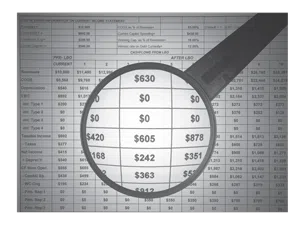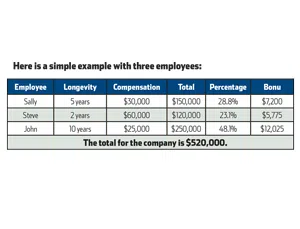The New Year is the perfect time to take a closer look at your company’s goals.
For seasoned HVACR contractors, forecasting sales and profit may seem like second nature. But who really knows what tomorrow will bring?
Numerous factors influence how well a business will do, including customer demand, the labor supply, the availability and price of whole goods and parts, etc.
Of course, there’s always the unexpected — such as extreme weather and drastic price shifts — that threatens even the most well-researched forecasts.
Despite the unexpected, HVACR contractors can dramatically reduce the forecasting anxiety and greatly improve the odds of an accurate forecast by measuring — and actively addressing — five specific key performance indicators (KPIs).
KPIs measure targeted aspects of a business and provide insightful data that inform contractors about expenses and overhead, efficiency and customer satisfaction and ultimately can illuminate the path to maximizing profit.
When used effectively, they accelerate the ability to create and maintain a distinct competitive advantage.
You face unique business challenges along with opportunities, though, and it’s often difficult to identify which KPIs matter most.
As we kick off a new year, it’s a perfect time to ensure you’re measuring the right indicators.
Ask yourself the following questions:
- Which KPIs will provide the greatest ROI?
- What specific action(s) can I take based on this data?
- What is the effect of this data on my business?
After consulting with numerous clients, here are the KPIs you should prioritize:
Focus on Gross Profit
Service work should provide a 70 percent margin, and new construction should provide a 20 percent margin. In addition, contractors should look at what percentage of work in 2014 came from new installations vs. what percentage came from maintenance/replacement.
What were the 2014 profits for each segment of the business? These numbers help contractors reprioritize marketing efforts and give them a better sense for how to position the business moving forward.
Track Unbillable Time
A service department should bill at least 40 percent of its labor hours, and a new construction department should bill at least 90 percent of its labor hours. If that’s not the case, it’s time to make some changes.
Contractors should look for ways to reduce the time spent on administrative tasks and ensure that every employee is in the right role based on their individual skillsets. This increases efficiency and improves morale.
Calculate the Conversion Rate to Billable Repair
It’s a smart idea to track the number of service calls made vs. how many of those trips resulted in an actual billable repair.
Monitor the Callback Rate
For a top-notch service department, return visits for an improper repair should total less than 2 percent. Contractors with rates much higher than this need to analyze their talent pool, review their quality procedures, implement appropriate evaluation criteria and incentivize reliable customer service.
Determine the Conversion Rate to Service Agreement
This indicates how many people made service calls vs. how many service calls resulted in the sale of a service agreement.
Contractors should provide employees with concrete steps to increase this rate and offer incentives for generating business. Contractors should also set a target of at least 300 service agreements per billable employee.
Unfortunately, there’s no one-size-fits-all approach to selecting KPIs — that’s why HVACR contractors should continually reassess indicators and make adjustments. There are hundreds of measurements, but only a few will generate a significant ROI. You should put the KPIs listed above at the top of their list.
That said, data offers no benefit if you don’t use it. Data is only valuable when you leverage insights to solve problems, fill gaps, streamline processes, etc.
Using data to back up decision making across a business will garner increased support from employees and allow contractors to confidently set realistic expectations for every division. This ensures alignment and makes everyone aware of what’s working and what needs to change moving forward to maximize growth.
KPIs have the power to transform a business and ensure that contractors stay on track to reach both short-term and long-term goals.
As an increasing number of firms vie for a limited pool of customers, everyone wants to identify a unique competitive advantage. Look no further than targeted KPIs.




